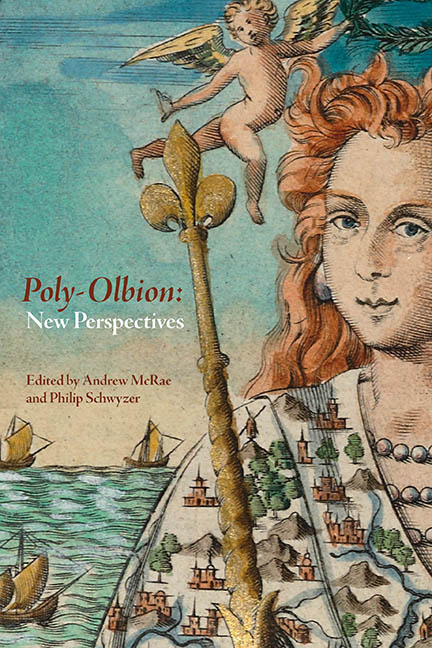2 - ‘If the Page satisfie not, inquire in the Margine’: The Ordinatio and Mise-en-Page of Poly-Olbion
Published online by Cambridge University Press: 27 March 2020
Summary
Poly-Olbion (1612/13) was published under the name of its poet, Michael Drayton, but as several of the contributions here testify it is in fact a multi-authored work, comprising a series of poems by Drayton, each accompanied by a prose commentary by John Selden referred to as ‘illustrations’, and a double-page decorative map by the engraver William Hole. Poly-Olbion maps, separated from the books they were originally made for and bound with, do good business on the antiquarian print market, and they are the most famous pictorial feature of the work. They are, however, far from the only distinctive graphic aspect of Poly-Olbion; indeed, their separation from the physical book by antiquarian print sellers’ knives obscures the fact that they were one element of a larger, collaborative typographic project, comprising Drayton's verse ‘songs’ and Selden's prose ‘illustrations’, as well as Hole's maps. The physical manifestation of the various elements making up Poly-Olbion (Fig. 2.1) uses graphic means to guide readers in their encounters with the work. A nuanced look at the organization of the work on the page, therefore, should be able to lead us to a more nuanced understanding of the ambition and execution of the project, and of the relationship between its various authors.
DRAYTON, SELDEN AND HOLE IN THE RECEPTION OF POLY-OLBION
The relation between the text and the maps of Poly-Olbion has received little detailed analysis, and in general terms has been regarded as harmonious and complementary. The relationship between the authors of the poetry and the prose of Poly-Olbion, on the other hand, has been the subject of much critical attention. Tension between the two authors had long been supposed to exist, as appears from the later seventeenth-century reception of the text, where Drayton and Selden are regularly presented in contrast. This contrast, however, may have had as much to do with the two authors’ divergent fortunes subsequent to the publication of Poly-Olbion as with their contributions to the work itself. Drayton had obtained a certain level of fame during the reign of Elizabeth, but appears to have fallen out of favour during that of James I, considered a voice of a bygone age, even by the poet himself. In contrast, when Selden made his contribution to Poly-Olbion, he was a relative unknown: a bright young legal scholar, popular among an inner circle of the London intellectual scene, but not a household name.
- Type
- Chapter
- Information
- Poly-Olbion: New Perspectives , pp. 39 - 66Publisher: Boydell & BrewerPrint publication year: 2020



